Madhu Akula
A practical guide to writing secure Dockerfiles
#1about 2 minutes
Why Dockerfile security is a critical foundation
Dockerfiles act as the blueprint for container images, making their security essential for preventing supply chain attacks and infrastructure compromise.
#2about 5 minutes
Following official Docker best practices for images
Start with small base images, use multi-stage builds, and manage the build context with a .dockerignore file to create efficient and secure containers.
#3about 4 minutes
Advanced security practices for hardening Dockerfiles
Enhance security by running containers as a non-root user, using COPY instead of ADD, avoiding hardcoded secrets, and pulling from trusted image registries.
#4about 4 minutes
Using Docker BuildKit to handle secrets securely
Docker's BuildKit allows mounting secrets and forwarding SSH agents during the build process, preventing sensitive credentials from being stored in image layers.
#5about 5 minutes
Automating checks with linters like Hadolint and Dockle
Use automated linters like Hadolint for best practices and Dockle for CIS benchmark compliance to enforce security standards in your CI/CD pipeline.
#6about 2 minutes
Reducing attack surface with Docker-slim
Docker-slim minifies container images by removing unnecessary files and can automatically generate seccomp and AppArmor profiles to harden runtime security.
#7about 3 minutes
Analyzing image layers for security with Dive
The Dive tool provides a layer-by-layer inspection of a Docker image, helping to identify inefficiencies and potential security risks like backdoors.
#8about 4 minutes
Introducing Open Policy Agent for custom policies
Open Policy Agent (OPA) and its language Rego provide a general-purpose engine for enforcing custom, organization-specific security policies on structured data like Dockerfiles.
#9about 6 minutes
Writing custom Dockerfile policies with Conftest
Leverage Conftest to write and apply custom Rego policies that validate Dockerfiles against specific organizational rules, such as only allowing images from a trusted private registry.
#10about 2 minutes
Next steps for implementing Dockerfile security
Implement security best practices early using linters in your IDE, integrate automated checks into CI/CD pipelines, and create standardized custom policies for your organization.
Related jobs
Jobs that call for the skills explored in this talk.
DevOps Engineer (f/m/d)
Power Plus Communications
Mannheim, Germany
Intermediate
Senior
Docker
Kubernetes
+2
(Senior) Platform Engineer (f/m/d)
MARKT-PILOT GmbH
Stuttgart, Germany
Remote
€75-90K
Senior
Kubernetes
Terraform
+1
Matching moments
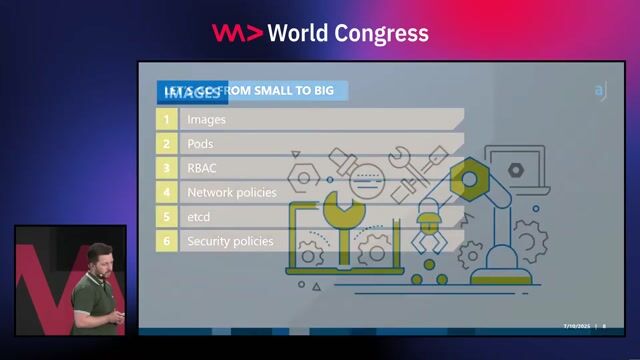
06:30 MIN
Securing container images against common vulnerabilities
Kubernetes Security Best Practices
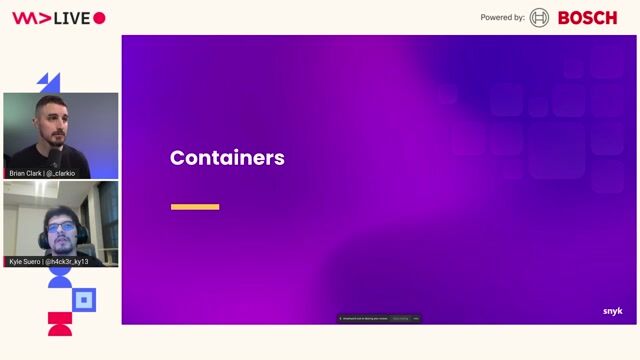
1:13:05 MIN
Securing containers and infrastructure as code (IAC)
Maturity assessment for technicians or how I learned to love OWASP SAMM
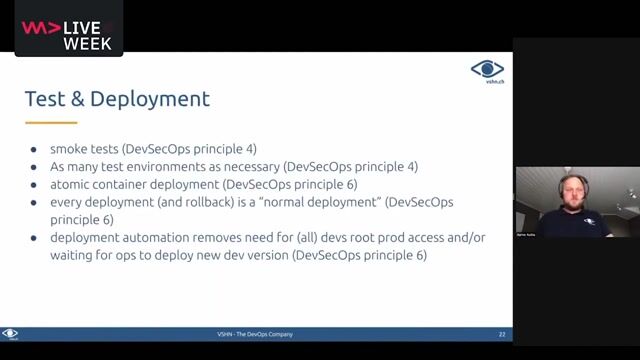
13:51 MIN
Using containers to improve security and deployment
DevSecOps: Security in DevOps
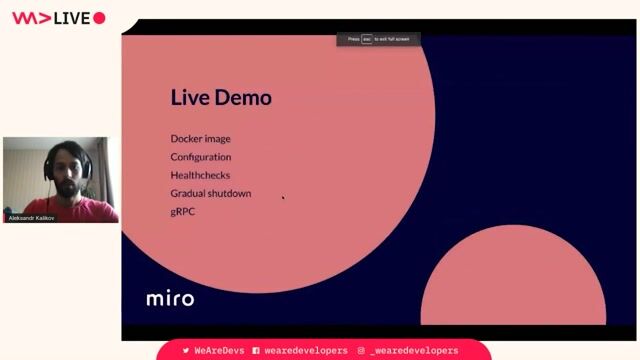
56:21 MIN
Security best practices for containers and Kubernetes
Microservices: how to get started with Spring Boot and Kubernetes

09:22 MIN
Securing container images and the software supply chain
Security Challenges of Breaking A Monolith
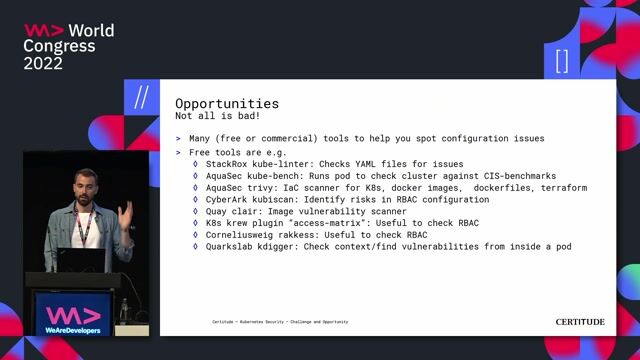
38:31 MIN
Leveraging containerization for improved security posture
Kubernetes Security - Challenge and Opportunity

09:05 MIN
Securing Docker builds and verifying script downloads
Supply Chain Security and the Real World: Lessons From Incidents

45:40 MIN
Introducing the Docker Agent for automating the SDLC
Compose the Future: Building Agentic Applications, Made Simple with Docker
Featured Partners
Related Videos
 44:30
44:30Securing Your Web Application Pipeline From Intruders
Milecia McGregor
 37:36
37:36Walking into the era of Supply Chain Risks
Vandana Verma
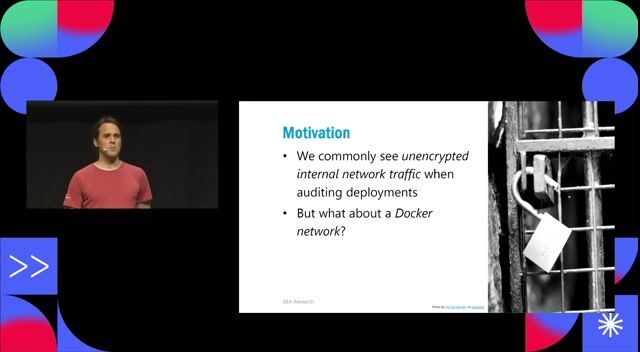 28:47
28:47Turning Container security up to 11 with Capabilities
Mathias Tausig
 33:20
33:20DevSecOps: Security in DevOps
Aarno Aukia
 43:39
43:39Reusing apps between teams and environments through Containers
Adrian Kosmaczewski
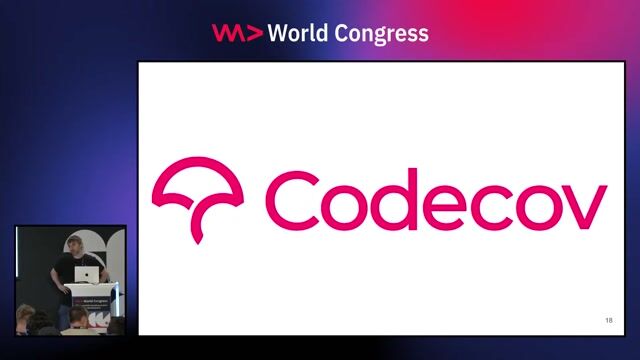 24:47
24:47Supply Chain Security and the Real World: Lessons From Incidents
Adrian Mouat
 50:09
50:09Compose the Future: Building Agentic Applications, Made Simple with Docker
Mark Cavage, Tushar Jain, Jim Clark & Yunong Xiao
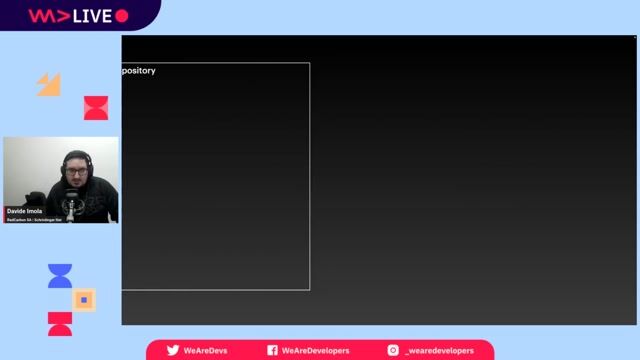 58:52
58:52Securing secrets in the GitOps Era
Davide Imola
Related Articles
View all articles



From learning to earning
Jobs that call for the skills explored in this talk.

DevOps Engineer – Kubernetes & Cloud (m/w/d)
epostbox epb GmbH
Berlin, Germany
Intermediate
Senior
DevOps
Kubernetes
Cloud (AWS/Google/Azure)

Prácticas Remuneradas DevOps (GitLab/Docker)
Implemental Systems
Municipality of Madrid, Spain
GIT
DevOps
Gitlab
Docker
Kubernetes


Prácticas Remuneradas DevOps (GitLab/Docker)
Implemental Systems
Retortillo de Soria, Spain
GIT
DevOps
Gitlab
Docker
Kubernetes


DevOps Architect Pipeline / Dev Container / OpenShift
Siemens AG
Berlin, Germany
C++
GIT
CMake
Linux
DevOps
+7

DevOps Engineer | GCP · Kubernetes · Terraform · Python ?
knowmad Mood
Barcelona, Spain
Remote
GIT
Bash
Redis
DevOps
+9

DevOps Engineer | GCP · Kubernetes · Terraform · Python ?
knowmad Mood
Lleida, Spain
Remote
GIT
Bash
Redis
DevOps
+9

DevOps Engineer | GCP · Kubernetes · Terraform · Python ?
knowmad Mood
A Coruña, Spain
Remote
GIT
Bash
Redis
DevOps
+9